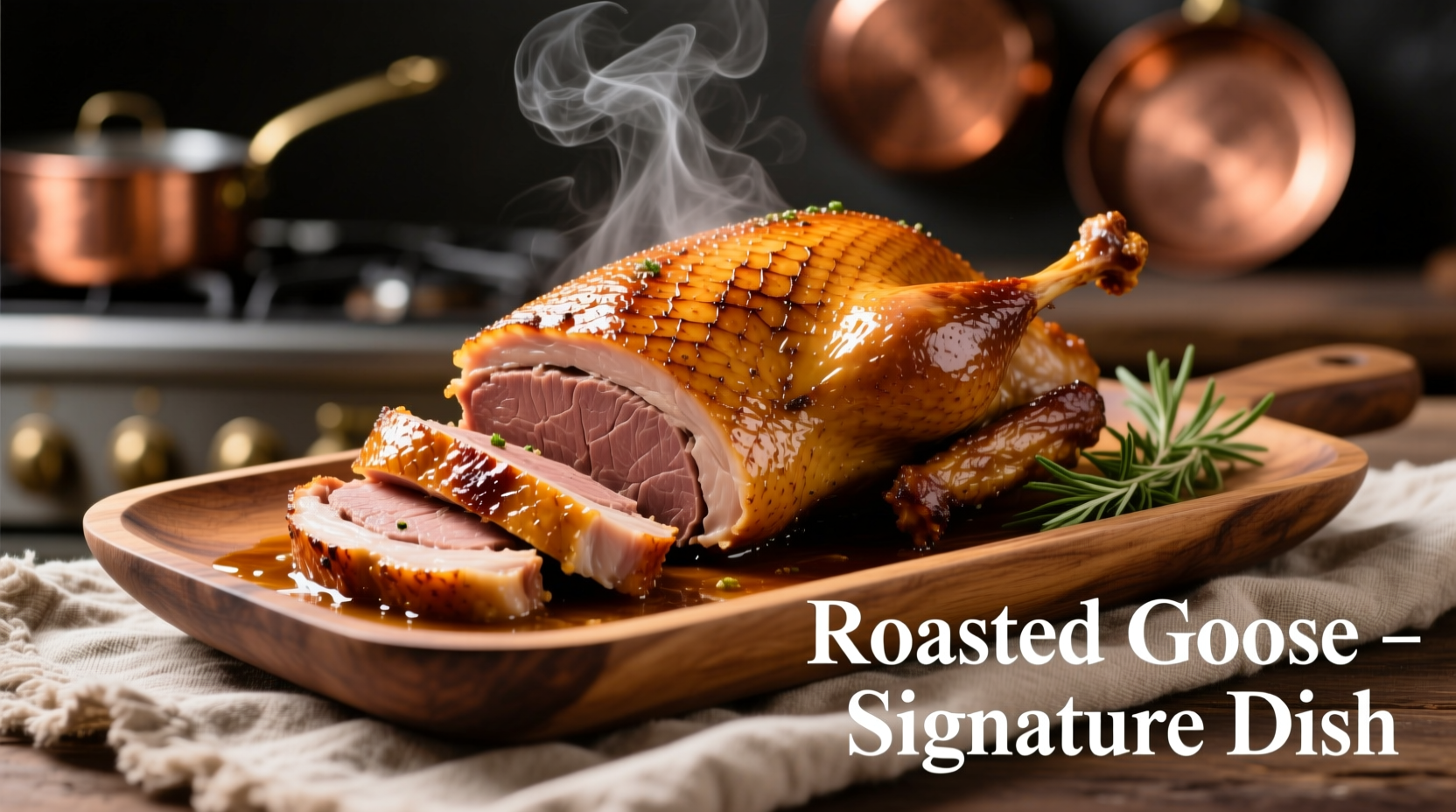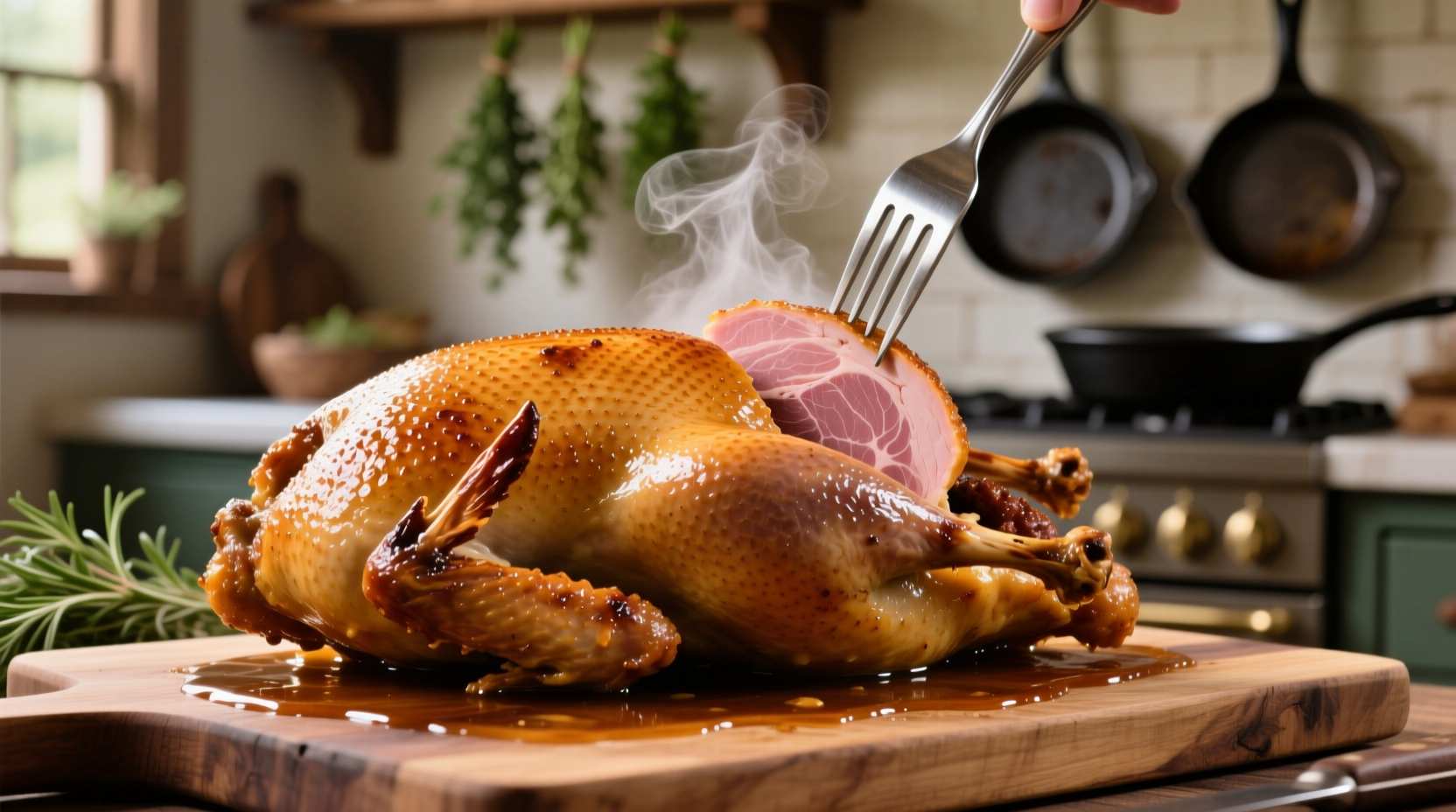Understanding Goose Flavor: Beyond the Basics
If you've ever wondered what goose tastes like, you're not alone. This distinctive poultry occupies a unique space between duck and beef in terms of flavor intensity. Unlike turkey or chicken, goose delivers a robust, gamey experience that culinary enthusiasts describe as "the steak of poultry." The taste profile varies significantly based on whether the bird is wild or domestic, its diet, and preparation method.

How Goose Compares to Other Poultry
Understanding goose's taste requires context. While chicken offers mild neutrality and turkey provides subtle earthiness, goose enters a different flavor category altogether. The high fat content (approximately 25% more than duck) creates a uniquely rich eating experience that requires specific cooking techniques to balance.
| Poultry Type | Flavor Profile | Fat Content | Gameiness Level |
|---|---|---|---|
| Goose (domestic) | Rich, earthy, slightly sweet | Very High (35-40%) | Moderate |
| Goose (wild) | Strongly gamey, metallic notes | High (25-30%) | High |
| Duck | Rich, mild gameiness | High (25-30%) | Moderate-Low |
| Turkey | Mild, slightly sweet | Low (5-10%) | None |
The Evolution of Goose Consumption
Goose has been part of human diets for millennia, with historical records showing its prominence in European and Asian cuisines long before turkey became popular. Ancient Romans considered goose a delicacy, often fattened with dried figs to enhance flavor. During medieval times, goose was the centerpiece of holiday feasts across Europe, particularly for Michaelmas and Christmas celebrations.
The flavor expectations have shifted dramatically since the 1950s when turkey began dominating holiday menus in Western cultures. According to USDA agricultural data, goose production in the United States has declined by approximately 75% since 1960, making it a specialty item rather than everyday fare. This historical context explains why many modern consumers find goose's distinctive taste unfamiliar compared to more common poultry options.
Factors That Influence Goose Flavor
Several critical elements determine how goose will taste when served:
- Diet and habitat: Wild geese feeding on grasses and grains develop more pronounced gamey flavors than domestic varieties raised on controlled diets
- Aging process: Properly hung goose (typically 3-5 days) develops more complex flavors while reducing metallic notes
- Cooking temperature: Cooking goose at lower temperatures (325°F/163°C) allows fat to render gradually, preventing greasiness
- Preparation method: Traditional French confit techniques versus roasting produce dramatically different flavor outcomes
Practical Tips for First-Time Goose Eaters
If you're trying goose for the first time, consider these evidence-based recommendations from culinary professionals:
- Start with domestic goose rather than wild varieties for a milder introduction
- Pair with sweet accompaniments like apples, pears, or red cabbage that complement the rich flavor
- Score the skin deeply before cooking to help excess fat render during preparation
- Serve in smaller portions (4-6 ounces) as the richness can be overwhelming in larger quantities
- Consider removing some skin before serving to reduce overwhelming fattiness
Professional chefs often recommend treating goose more like red meat than poultry when planning your meal. The USDA Food Safety and Inspection Service confirms that goose requires thorough cooking to 165°F (74°C) internal temperature, but many culinary experts prefer removing it from heat at 155°F (68°C) and allowing carryover cooking to reach the safe temperature while preserving moisture.
Common Misconceptions About Goose Taste
Several persistent myths surround goose flavor that deserve clarification. Contrary to popular belief, properly prepared domestic goose doesn't taste "fishy"—this perception usually results from improper handling or cooking. Similarly, the notion that all goose is overwhelmingly gamey stems from experiences with wild varieties rather than commercially raised birds.
Culinary research from institutions like the Culinary Institute of America indicates that when goose is cooked correctly, tasters consistently describe it as having "a complex, satisfying richness" rather than off-putting gameiness. The key lies in proper fat rendering and pairing with complementary flavors that balance its natural intensity.
Where to Source Quality Goose
Finding properly raised goose requires some effort since it's not commonly available in standard supermarkets. Specialty butcher shops, farmers' markets, and online purveyors specializing in heritage poultry offer the best options. Look for geese labeled as "Bourne goose" or "Embden goose," which are preferred domestic varieties known for superior flavor profiles.
The American Poultry Association notes that heritage-breed geese raised with access to natural forage develop more nuanced flavors than those raised in confined operations. When purchasing, examine the skin color—healthy goose should have creamy white to pale yellow skin, not grayish tones that indicate age or improper storage.











 浙公网安备
33010002000092号
浙公网安备
33010002000092号 浙B2-20120091-4
浙B2-20120091-4